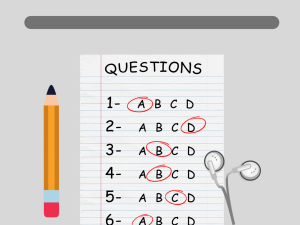Wakefield women’s tennis team struggles through a season on the road
Wakefield women’s tennis recently played a match against Wake Forest High School. Despite not having access to their own court, they’ve managed to make it work this season.
October 6, 2022
Coming out of a successful season last year with a 58-47 record, the Wakefield women’s tennis team was surprised by the courts they returned to. The maintenance of their home courts, which began in June and was supposed to have finished in August, has dragged on for longer than anticipated, and halfway into the season, these tennis players are experiencing the effects.
The tennis team has been lobbying for new courts for a few years. Although their tennis courts were usable, they were dilapidated in comparison to those used by the rest of the conference.
“[Our courts] had cracks with grass growing through them,” senior co-captain Pippa Sellick said. “Our coach would have to take his lawn mower out and mow the courts.”
Aside from the tedious upkeep of the tennis courts, the run-down state of the courts also had consequences during matches. Senior Katelyn Mann expressed frustration with the condition of the courts and the effect it had on performance.
“I would roll my ankle,” Mann said. “Or somebody would hit the ball over and it would hit a crack and roll instead of bouncing like it’s supposed to. I can think of several points that were lost just because of the way the ball hit the ground.”
With the absence of their home courts, the team has had to adjust to an infrequent practice schedule while utilizing the Wake Forest and Heritage High School courts.
Junior Sophie Hanna attributes the uncharacteristic losses the team has been facing this season to the awry practice schedule.
“We don’t get to practice as much and not everybody can attend because [practice] is at random times during the day,” Hanna said.
Additionally, adequate space is necessary for a good practice to ensue. The limited number of courts at other schools has been an inhibitor during practices.
“We have to share courts during warm-ups and we each have less practice time overall,” Mann said.
A decrease in practice time is a likely culprit for the team’s 5-9 record. However, another factor also comes into play. Many sports fans are familiar with the idea of home-court advantage, and it’s no less important in tennis. A player’s comfort and familiarity during a game can have a huge impact on whether or not they win.
“I think we are all a little bit thrown off this season because we haven’t been doing as well as we have in the past,” senior Ella Raftery said.
Mann detailed the challenges faced by a team without a familiar court to return to.
“Every week we have to get used to a new court,” Mann said. “[In previous years] you’d have a home game where you know the court. You know where the sun shines at certain times of day and how the ball will bounce on that court.”
Without this knowledge and familiarity that other teams experience in half of their matches, these ladies are at an extreme disadvantage. However, the young women of Wakefield women’s tennis are hopeful that the courts will be completed by their senior night match. Their latest win against Heritage indicates progress. The team is optimistic that this win will be the first of many.
“We’ve had a couple of hard conference matches that went differently than we expected but we won our last match so we’re on the up,” Sellick said.









Emily Dudash • Oct 7, 2022 at 1:48 pm
go Wakefield women’s tennis!!!!!!